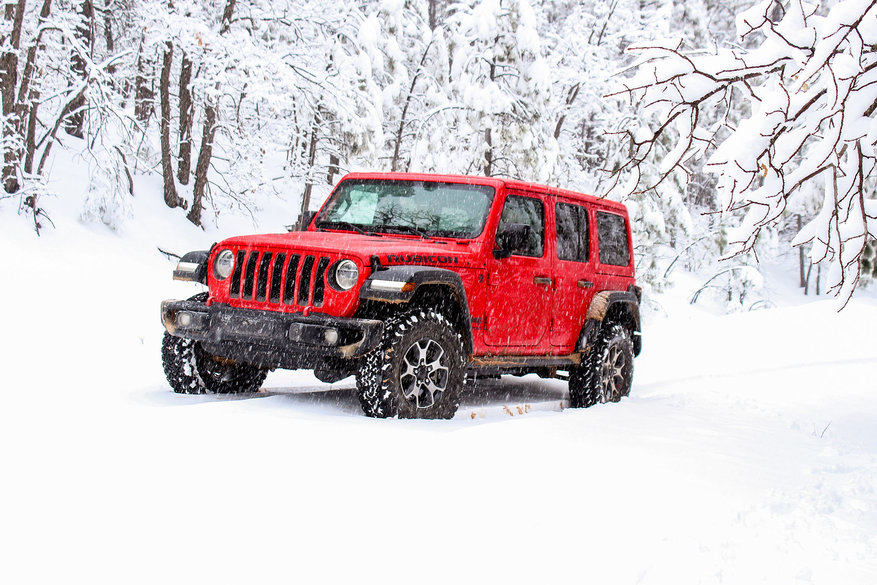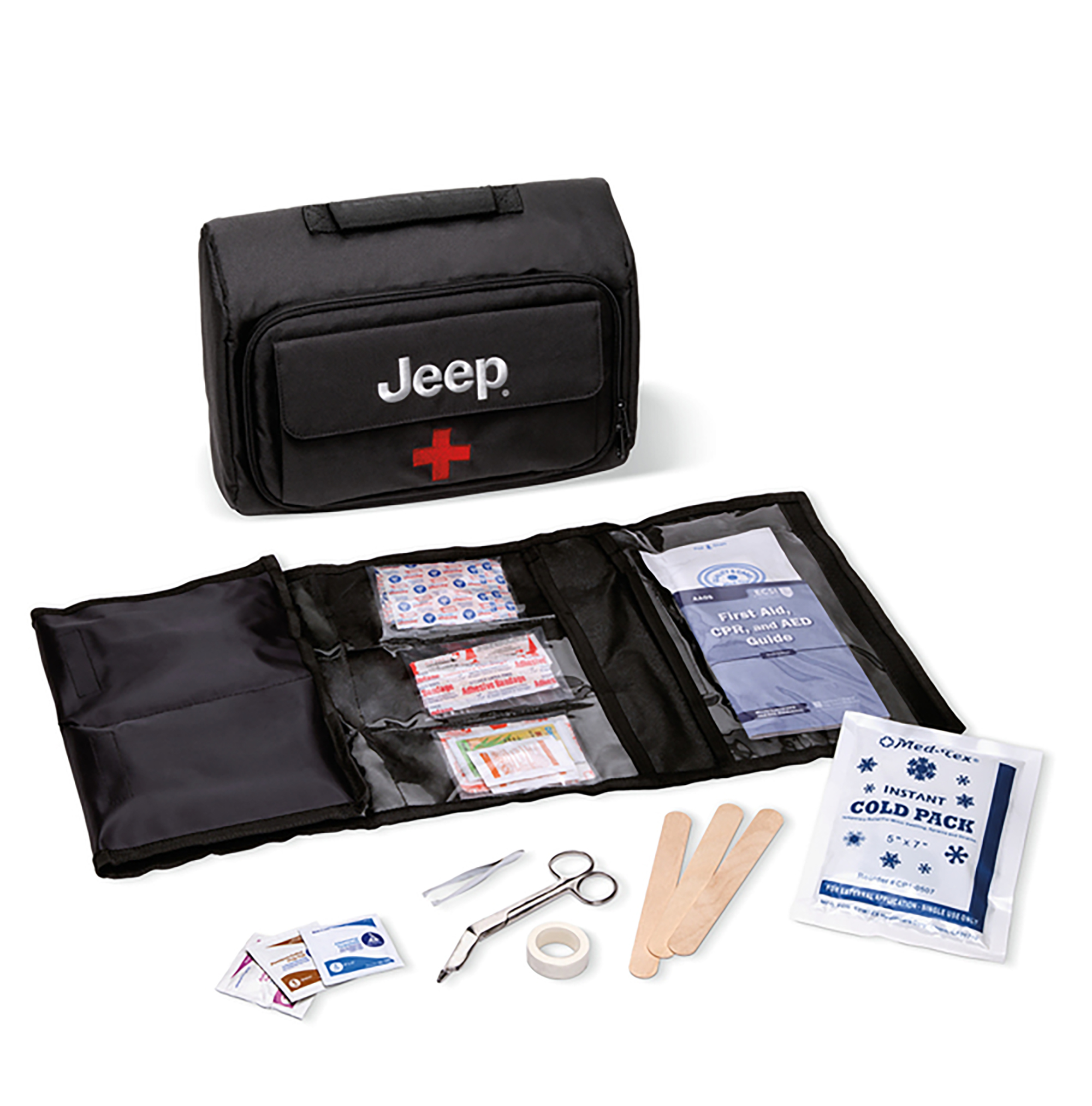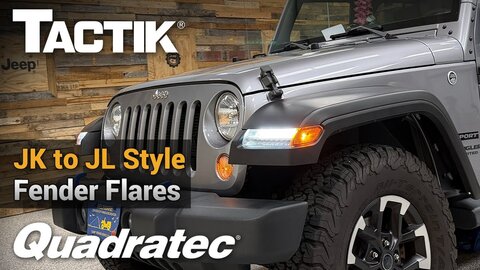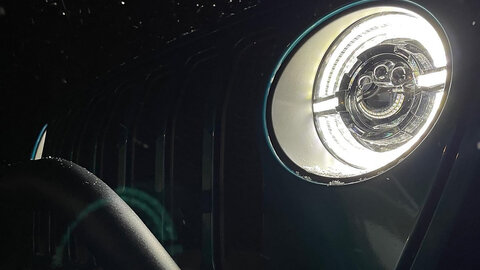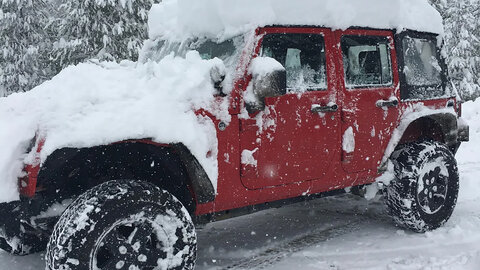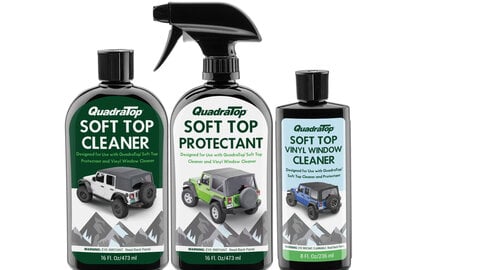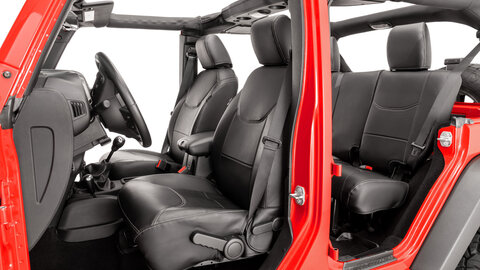by Matt Konkle
Torque Managing Editor
The winter holiday season always finds more people on the road than just about any other time of year. And it certainly doesn't help when colder temperatures, ice, freezing rain, or snow all combine to make traveling a difficult experience for many around the country. Sure, the traditional song may wax about a winter wonderland when it snows, but if you are somehow stuck during your adventures, that time is anything but a wonderland.
So whether your driving plans over the next few months involve an afternoon of plowing through snow, going back and forth to work, or something more involved like weekend time at your favorite off-road trails, these colder months mean staying prepared whenever you leave the house. Even though everyone loves to say a Jeep can pretty much go anywhere, that doesn’t mean it always will. Accidents, mechanical failures, tire issues, or trail mishaps all can happen at any time, no matter how closely you stick to an oil change schedule, rotate your tires, or check those brakes. And cold weather conditions make things more difficult.
That’s why carrying some type of emergency kit inside your Jeep while traveling makes sense. Just in case. We’re not talking about basic common-sense stuff you should already have, like blankets, ice scrapers, phone chargers, bottled water, food, or extra clothes. Nor are we talking about modification parts as we’ve already covered in our Eight Essential Jeep Parts For Winter article.
No, we mean building up that winter emergency kit with nine highly recommended emergency items designed to help get you back on the road or trail in the event you are stranded somewhere.
Let’s take a look.
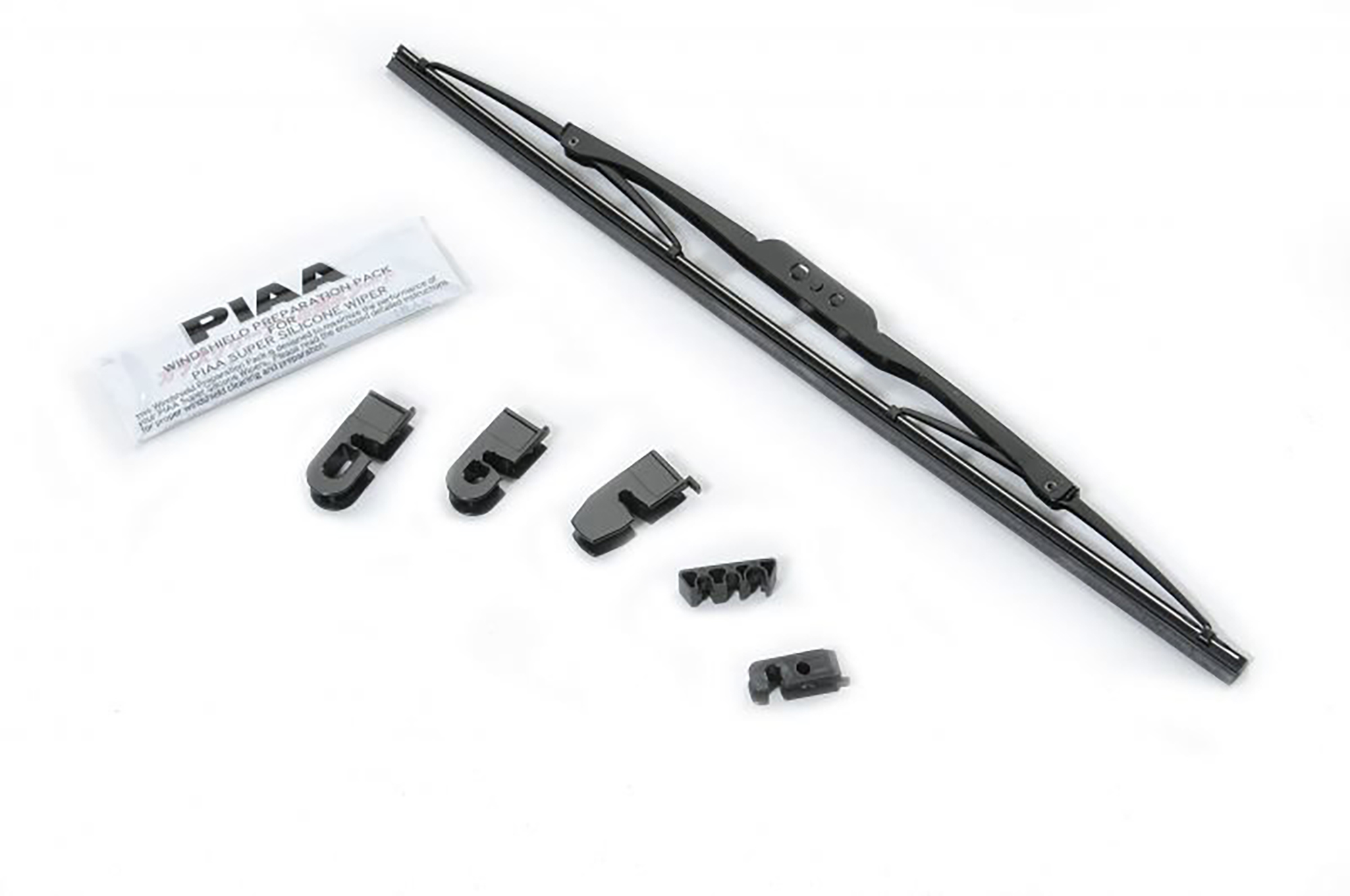
Wipers and Washer Fluid
No matter how good a driver you claim to be, you really are not going far if that windshield is caked with road grime, or your wipers fail. Sure, you can try the old stick your arm out and splash some bottled water on the windshield, but really, not only is it unsafe, but it wastes some perfectly good bottled water in the process.
In many areas that are prone to moisture this time of year, road salt (or whatever chemical is used to melt ice and snow) usually mixes with that slush and sprays up on your windshield almost every day. The more you use your wipers and wiper fluid, the more you wear away at those blades and drain the washer reservoir. So, making sure you have a spare bottle of washer fluid included in your Jeep winter emergency kit, as well as a good set of replacement wipers, will allow you to maintain visibility no matter what you face during the season.
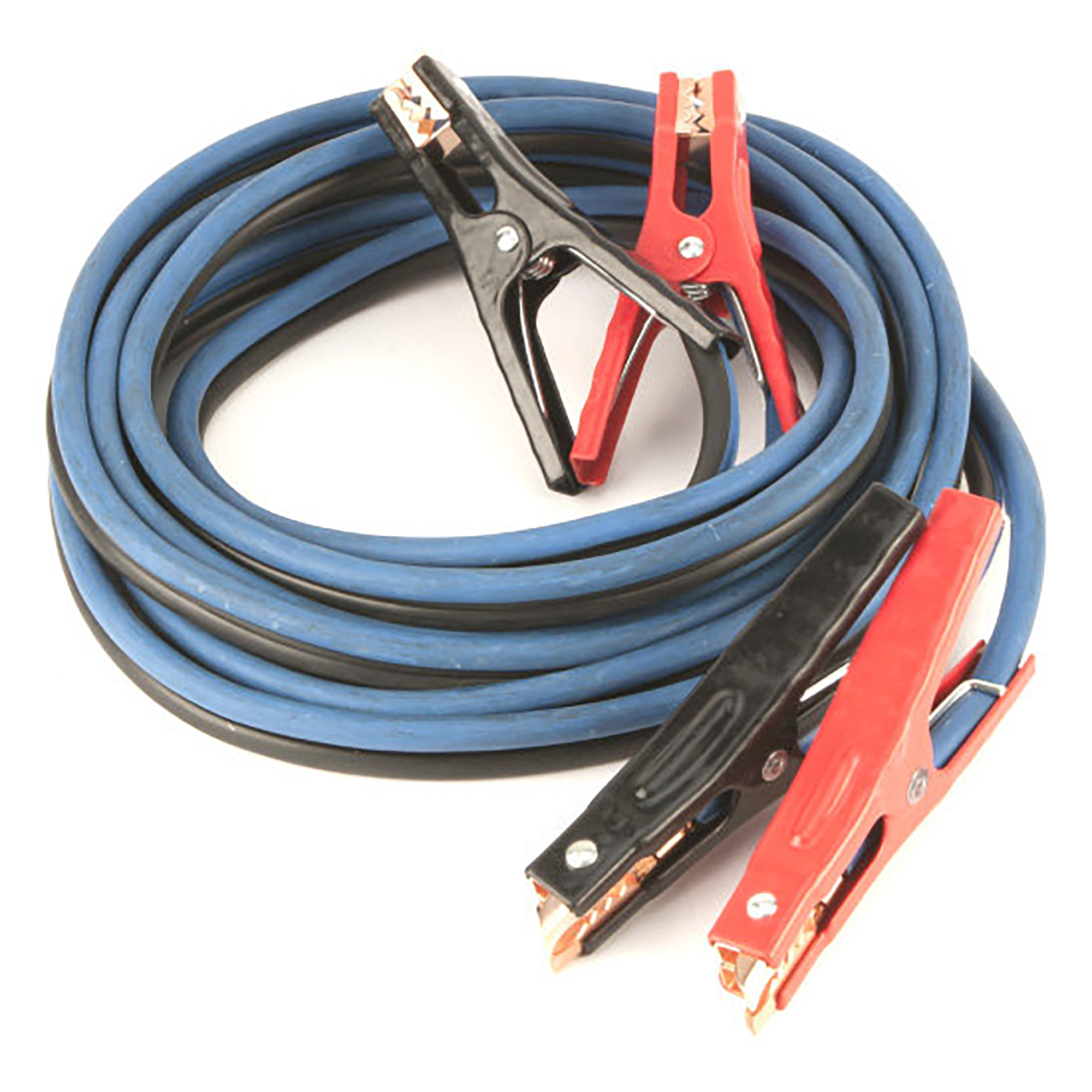
Jumper Cables
Like nearly everything else on or under your Jeep, winter temperatures do not play well with accessories — especially the vehicle’s battery. And if/when it falters, you may think the straight-out cold weather is to blame when in reality, winter is actually the ‘closer’. Something that finishes off the job that warmer summer months really did on the battery. Among other things, hot weather tends to accelerate corrosion in your battery over time, which can act as an insulator, reduce current flow, and damage the battery's interior. Heat also causes the liquid inside the battery to evaporate, which can weaken its charge. Then, when winter comes around, those colder temperatures mean the battery has to work that much harder to start. On average, a battery loses about 35 percent of its strength when the temperature falls to 32 degrees Fahrenheit and 60 percent after the temperature hits 0 degrees F.
So battery failure is common during winter months. But a good set of jumper cables is a smart way to make sure you are not stranded somewhere for long. After all, you will most likely either be able to find a friend or a Good Samaritan faster than waiting for Triple-A. Even if you know you're battery is on its last legs, using jumper cables to get going will help you make it home, where you can make arrangements to change out that battery.
We recommend utilizing a set of cables at least 20 feet in length, as you really can never predict how your Jeep will end up should the battery fail, and you may really need that extra cable length if the corresponding vehicle can’t get that close.
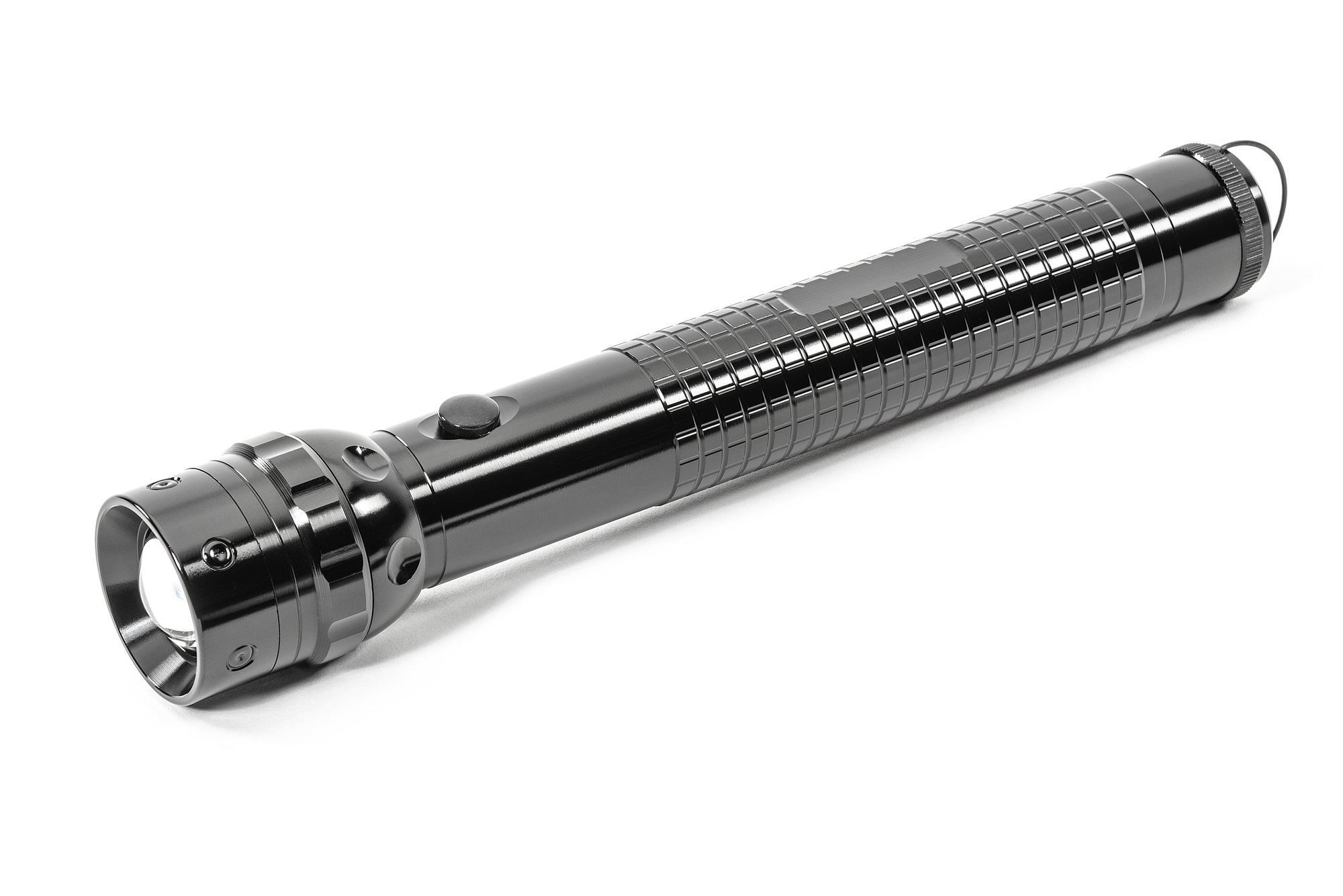
Flashlight
This is definitely a common-sense item that should be a year-round staple inside your Jeep, but is often forgotten in place of other stuff when building an emergency kit. However, a durable, well-powered flashlight can be helpful at any time because you won't always have perfect light conditions when you are changing a tire or peering inside that engine bay.
Now we’re not talking about some little keychain light or one of those weak-beamed dollar store versions, but a solid LED flashlight with a good lumen count. That’s right, LED. These generally last much longer than their incandescent counterparts and still retain plenty of power even as the batteries fade. Additionally, it is always a good idea to pack a few spare batteries.
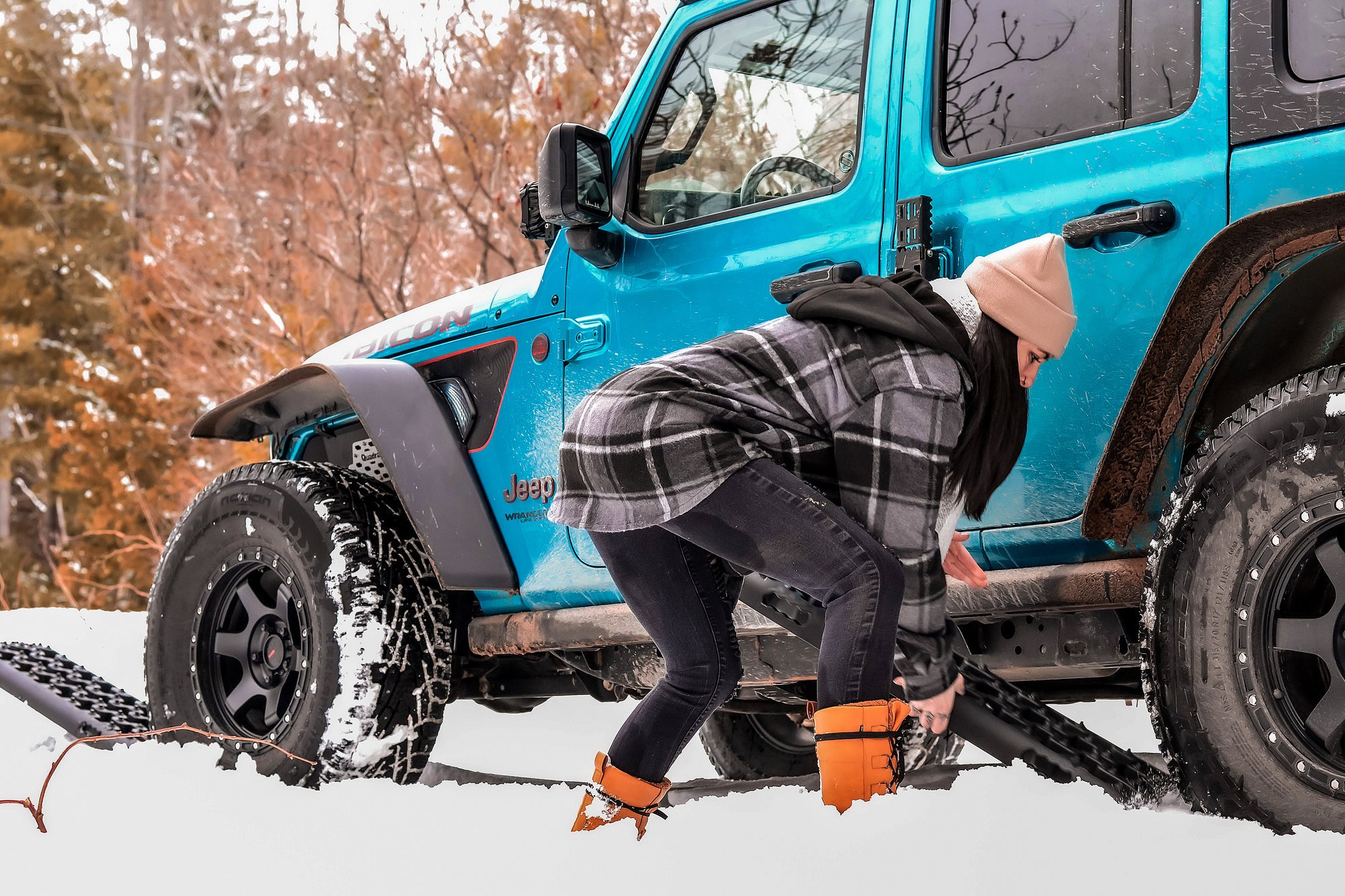
Recovery Boards
Drive or trail ride long enough in snowy, nasty weather and odds are you will eventually have some traction issue causing you to spin your tires. Yes, four-wheel drive is helpful, but often those wheels can dig themselves into a spot where you are simply not getting out on your own. This is why a good set of recovery boards in your winter emergency kit makes sense. Unlike sand or cat litter, which can get mixed up in the snow and lose effectiveness as you try to escape, you can use traction ramps to help dig into the obstruction and then lay them down so your tires find the purchase they need.
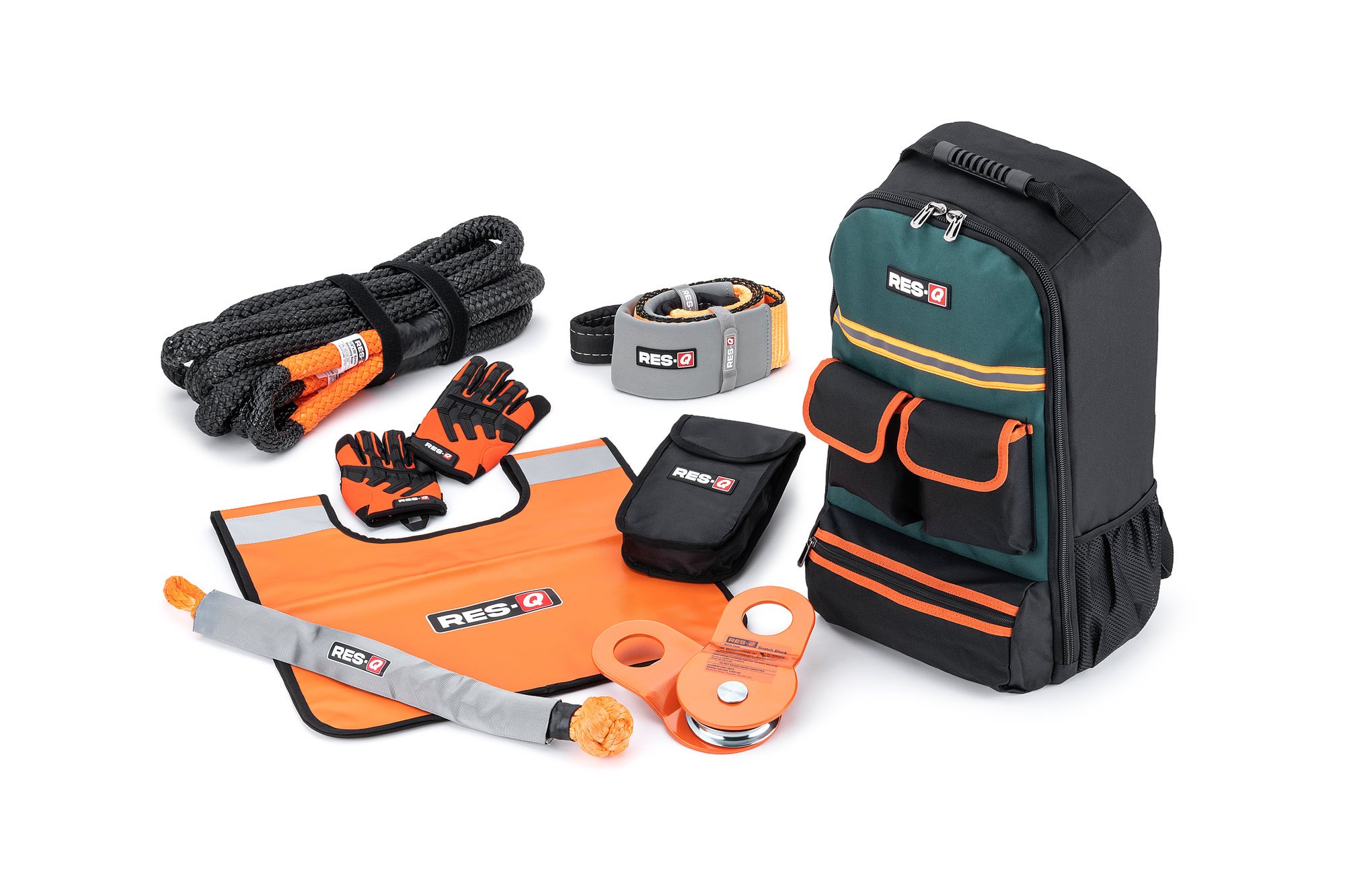
Recovery Kit
We don’t need to tell you that winter driving conditions can change in an instant. Well, we already did, but life on the trail can change as well, rather quickly. One minute you are cruising along fine, and the next you’ve slid sideways into a ditch. Or picked a not-so-good line and slipped off that rock and are now high-centered.
Things happen.
But good things happen to those who are prepared. That means including good recovery products in your winter emergency kit. These items include protective gloves, tow straps, D-rings, snatch blocks and tree truck protector. Most, or all, of these items will be packaged inside inclusive recovery kits that also provide a handy storage bag so everything isn’t strewn all over your vehicle’s cargo area. These items won’t help stop you when snow or ice knocks you off the trail. But they certainly can help get your rig moving again.
First Aid Kit
There are no guarantees that a winter accident, no matter how minor, will keep you or other riders free from injury. Or that your trail repairs will go off without cuts and bruises. So when something like that happens, then ensuring you’ve packed a good, basic first aid kit can help small injuries from turning into something a bit more major.
An inclusive first aid kit should involve items like ice packs, gauze pads, alcohol wipes, bandages, first-aid tape, tongue depressors, vinyl gloves, antiseptic wipes, scissors and tweezers—all grouped inside an easily accessible storage bag so you aren’t looking here or there for what you need. Also helpful would be an instruction kit providing basic first-aid tips for anyone who may be performing the treatment.
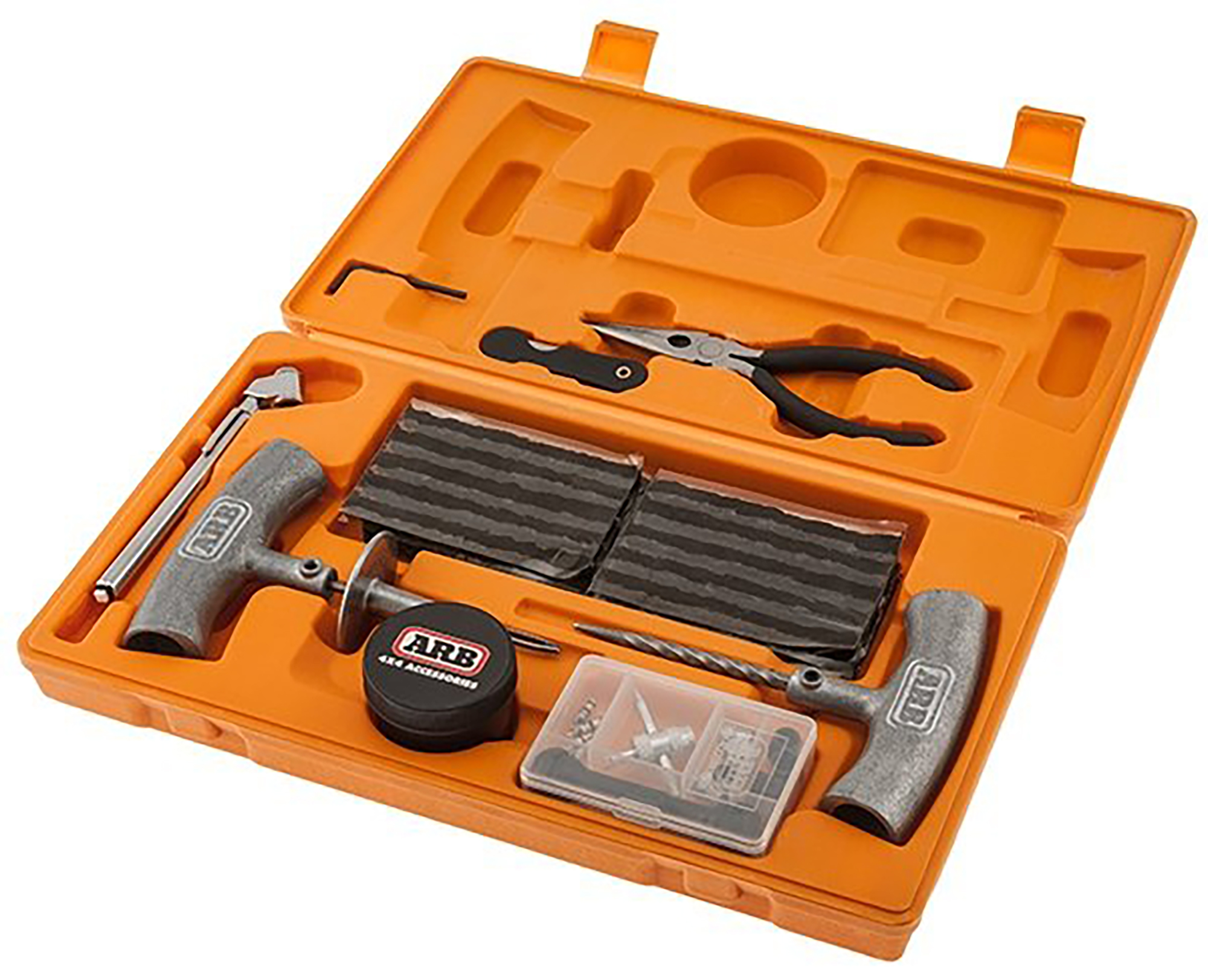
Tire Repair Products
It should go without saying, but your Jeep’s tires are the only link it has to the road or trail. When that link is broken or damaged—when stuff like nails or other road debris gets sucked up and implanted in your tires—then a flat (at best) or an accident (at worst) can happen.
Additionally, vehicles with severely low tire air pressure will see reduced gas mileage and are at a greater risk of developing other issues like tread separation because of added heat from road friction. See, winter temperatures can change dramatically day to day, and when that happens, tires can lose about one psi for every 10 degrees. This pressure loss can add up quickly if left unchecked and cause real problems.
So, to help provide peace of mind when driving, you can use some good tire safety measures before you even get into the vehicle during the colder winter months. A proactive Jeep walk-around can quickly identify potential problems, such as a flat or low tire pressure. However, without the proper tools, you won’t really be able to do anything either. Sure, you can head to the local gas station if your tire is low on air, but that doesn't address the cause. Also, what if the tire is flat? Are you willing to risk rim damage trying to make it to the air-filling station?
The best way to handle finding a nail or other debris in your tire is to have a solid tire repair kit handy. Add in a battery powered air compressor, or Powertank system, and you have the perfect solution to plug the issue, as well as airing back up to the proper pressure. Most tire repair kits include a tool to remove the offending debris, a reamer to bore into the tire and clean up the hole, and an insertion needle and rubber repair cords to seal the area.
Sometimes, though, you can't avoid changing out a tire after it is damaged. It could be a bent rim causing the problem or a sidewall issue on the tire that is not fixable, and when in doubt, it is always wise to swap to your spare.
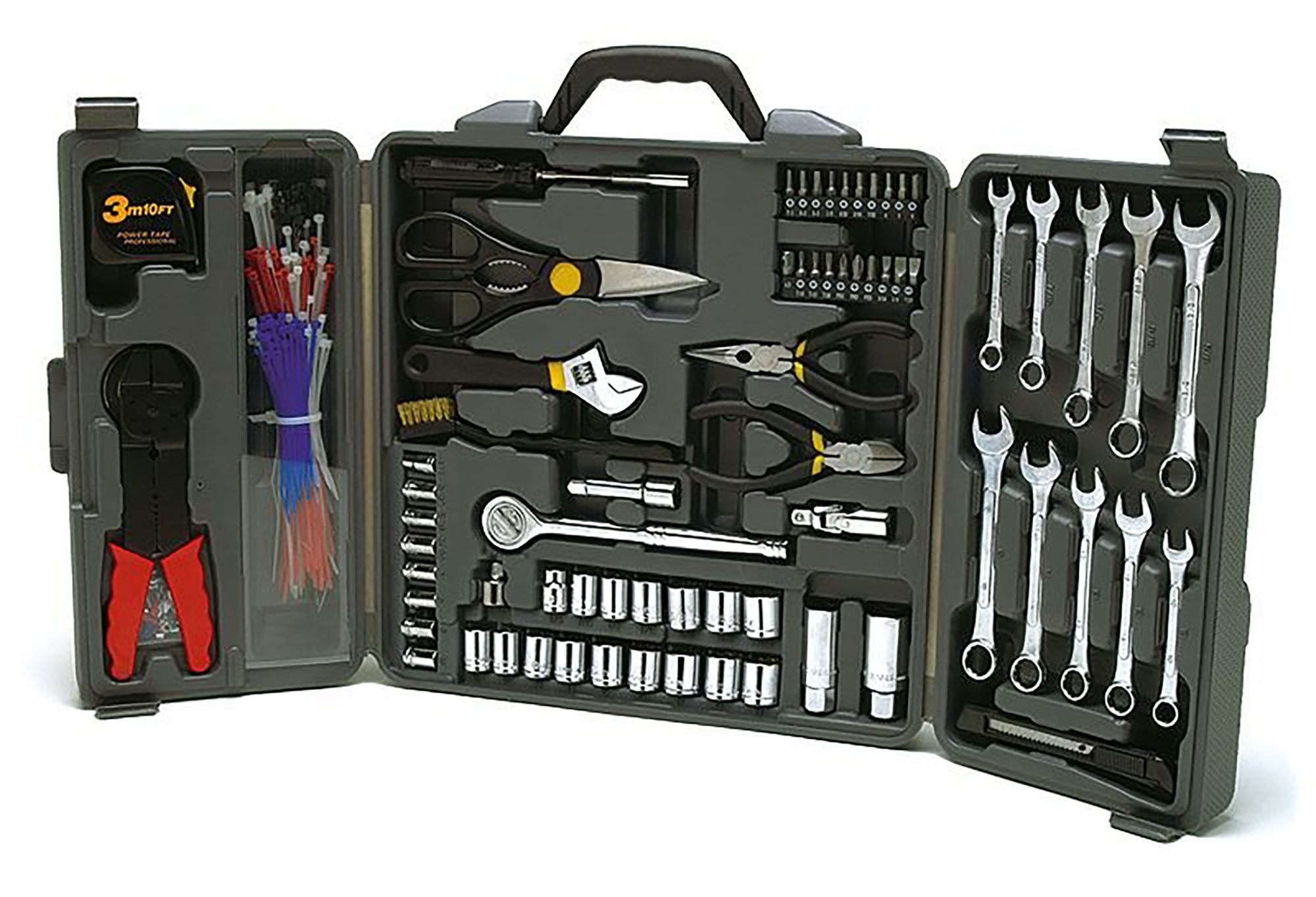
Basic Tools
No doubt you’ve often heard that having the right tool for a job is imperative. If you haven’t, you should know that many small issues can be solved before becoming larger ones by having the right tool when needed. Perhaps it is to secure a bumper or hitch that has somehow come loose. Or maybe it is something inside the engine bay, like a cooling issue or battery, that needs to be addressed. Even something that happened on the trail, like a busted driveline part. Winter maintenance troubles can happen at any time, which is why having a decent tool set is perfect for your winter emergency kit. You don't have to be a master mechanic to use these things either, as any fixes don't need to be permanent; just something adequate to get you back to the trailhead or home and out of the elements, so you can more adequately correct the problem.
Now, these kits will not include stuff like air tools or other high-powered accessories, but will offer good, solid items such as wrenches, torx bits and sockets that can take on most situations. Additionally, supplementing that kit with accessories like a trail shovel, knife, or axe, will give you the ability to dig or cut your way out of trouble, thus allowing an easier recovery following a trail mishap.
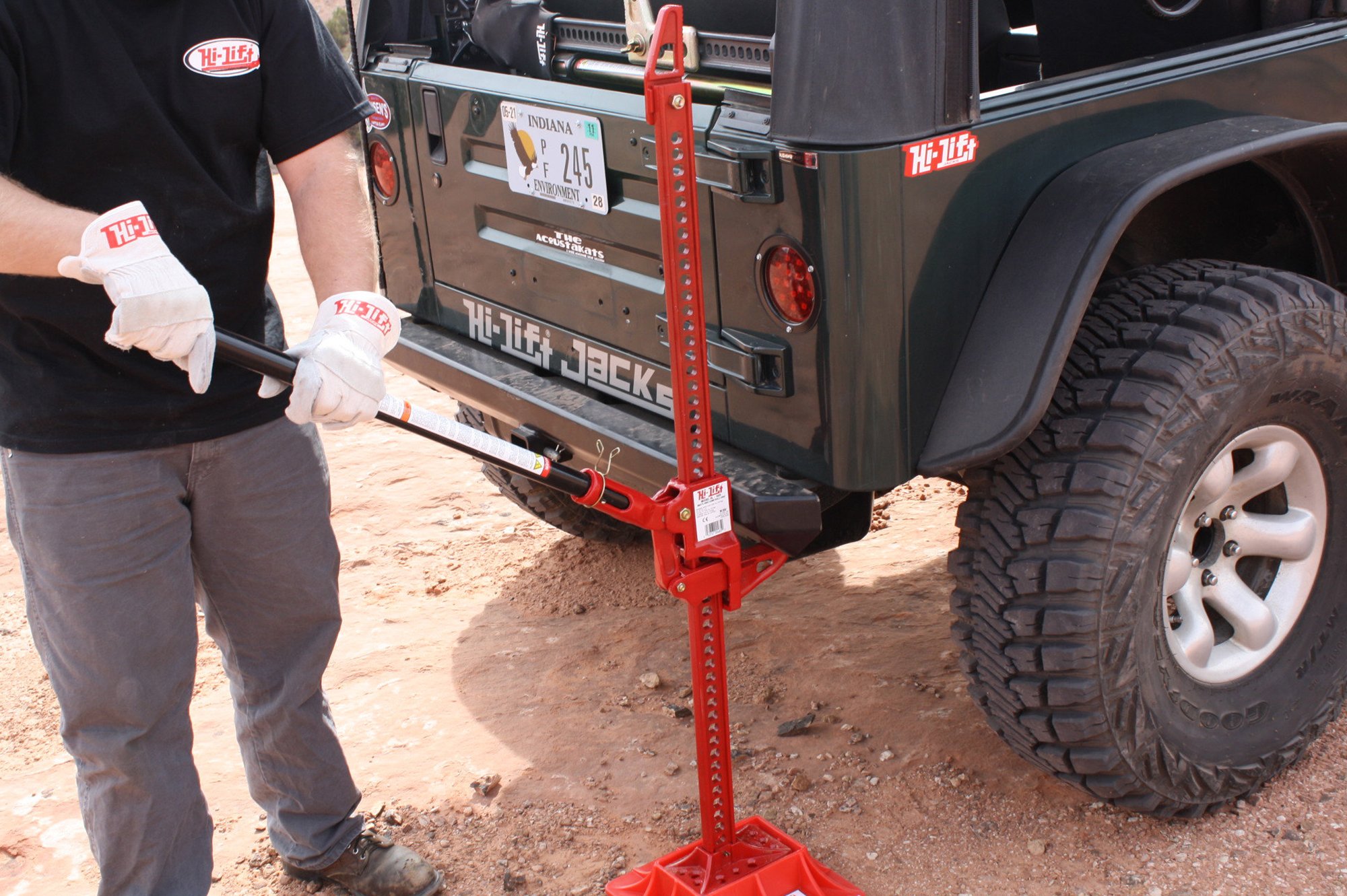
Off-Road Jack
When winter driving turns unpredictable, and it always does, having a dependable way to safely lift your Jeep can make all the difference. Snowbanks, hidden potholes, icy ruts, or trail obstacles can damage tires, bend wheels, or leave you in a spot where a quick tire change or underbody fix becomes necessary. And while every Jeep does have a factory jack, that tool is often the first thing owners discover isn't up to the task when conditions turn harsh.
So, a dedicated off-road jack should become an essential part of your winter emergency kit.
Unlike standard scissor or bottle jacks designed for smooth pavement and stock ride heights, off-road jacks are built to handle lifted Jeeps, larger tires, uneven terrain and the added complications of snow and ice. Many feature oversized bases for stability in soft or slippery conditions, high-lift capabilities for Jeeps running 33-inch (or larger) tires, and reinforced construction that won’t flex under weight or cold temperature stress.
These jacks aren’t just for tire changes either. If you find yourself high-centered in deep snow or hung up on a hidden obstacle, a proper off-road jack can help you carefully raise the vehicle enough to reposition traction boards or clear packed snow and ice from under the frame. They’re also useful for trail fixes, like reseating a bead, tightening a component, or freeing a compromised wheel.
For winter use, a heavy-duty jack base or footplate is highly recommended. It keeps the jack from sinking into snow or shifting on unstable surfaces, giving you the stability and confidence you need to work safely in tough conditions.
Whether you choose a Hi-Lift style jack or a hydraulic off-road jack, carrying one means you're better prepared for unexpected breakdowns, tire damage, or recovery situations where traction alone won’t save the day.
Other Articles That May Interest You:
Merry Jeepmas Day Six: Quadratec Dead Pedal













